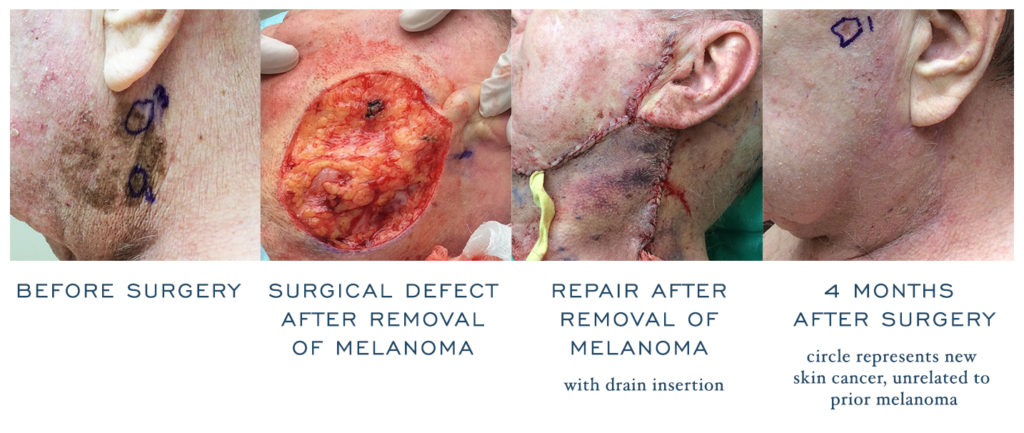Melanoma Myths: Part 1
While melanoma is a serious diagnosis, the treatments for melanoma have improved substantially in recent years, and most patients require a simple surgical procedure as their treatment. And while there is great information now published about melanoma that is accessible to the public, oftentimes it is difficult to sort through the facts about melanoma, the diagnosis, and its treatment.
As a fellowship-trained skin cancer and reconstructive surgeon and an elected member of the American College of Mohs Surgery, Dr. Bailey is an expert in treating melanomas. In this series, “Melanoma Myths,” Dr. Bailey hopes to dispel some common myths about melanoma and provide guidance and recommendations for those who believe they may have a melanoma, who have been diagnosed, or who are going through treatment.
Melanoma Myth #1: “It has been present for years, it can’t be skin cancer.”
Many people believe that simply because a spot has been present on the skin for years, and has seemingly not progressed or changed, that it couldn’t be skin cancer. However, the truth is that spots can be present for many years, and through slowly accumulating sun damage, a spot that may have been benign can turn into a skin cancer. The brown spot the photos below was present for many years, slowly growing, but it was an early melanoma (melanoma in situ). The two circled areas are locations of biopsies taken to confirm this diagnosis. The only way to be certain a spot is not a cancer is to take a biopsy.
This spot has all the hallmark features of skin cancers (The ABCDs):
It is Asymmetric
It has irregular Borders
It has multiple Colors
It has a Diameter bigger than a pencil eraser (some studies also describe the spot as Distinct, or Different from the patient’s other spots).
Not all spots are bad—but your dermatologist should check your spots if they violate the ABCDs!

